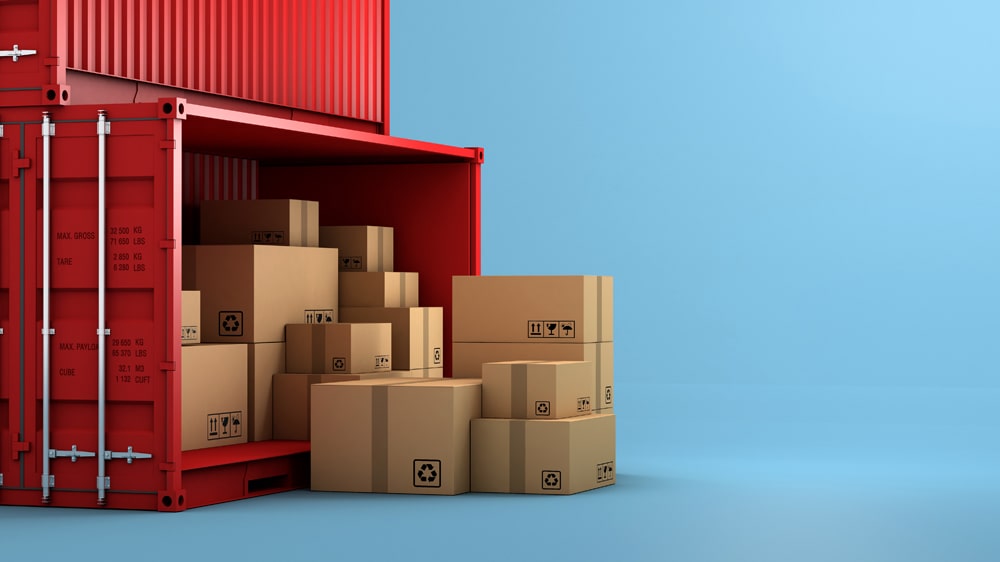When people talk about shipping containers, they usually think of the standard 20 to 40 feet containers used for storage and transportation. Considering that 90% of the world’s cargo is moved by ships, the containers have to be built with durability, reliability, and utility in mind.
As such, depending on the cargo to be loaded or the services needed from them, shipping containers may vary in terms of construction materials, structure, dimension, and features. Different types of shipping containers are being used today to meet the requirements of all kinds of cargo. Let’s take a look at 10 types of containers that are widely used in the shipping industry.
- General-purpose containers
General-purpose containers (also known as dry containers) are the standard containers used for loading most types of normal cargo. These containers are weather-proof, fully sealed, and come with rigid sidewalls and floors. General-purpose containers can be made to fit flexitanks or liner bags for shipping various types of dry bulk cargo or liquid bulk cargo. These containers come in 20 feet to 40 feet.
- Flat-rack containers
Flat-rack containers feature collapsible sides that can be folded neatly to create a flat rack. The end walls are stable enough to secure cargo, thus making them ideal for shipping oversized goods like construction materials, big reels, heavy machinery, and even vehicles on tracks. Some 40 feet flat-rack containers are capable of carrying as much as 45 metric tonnes of cargo.
- Open-top containers
As the name suggests, open-top containers have a convertible top which can be easily removed to accommodate tall cargo. Such containers make loading easier for machinery or bulky finished products that are usually difficult to load through the container door. Open-top containers feature lashing rings on the upper and lower side rails to help secure cargo and are available in both 20 and 40-foot lengths.
- Double-door containers
Double-door containers have accessible doors on both ends which helps facilitate the loading and unloading of goods. Also known as tunnel containers, these vessels are commonly used for transporting steel and iron due to the wide space available. Both the front and rear door have the same locking assembly and are fully weather-proof to safeguard the cargo from the elements.
- High cube containers
High cube containers are constructed similarly to general-purpose containers except they’re a foot taller. These containers come in various sizes from 20, 40, and even 45 feet to accommodate goods and cargo that require a bit more volume capacity Most high cube containers have recessed floors at the front end which helps centre it on a gooseneck chassis, allowing it to lie lower and be constructed taller than general-purpose containers.
- Open side containers
Just like high cube containers, open side containers resemble general-purpose shipping containers with the addition of side doors that can open and close. This feature gives freight handlers wider room for access to make loading/unloading materials easier. Open side containers are available in 20 and 40-foot sizes to fit cargo of various sizes, especially the ones that can’t fit through container doors.
- Iso reefer containers
Iso reefer containers are used for transporting temperature-sensitive goods like fruits, vegetables, and meat. Corten steel is used to construct these types of containers to provide excellent corrosion resistance and durability. Iso reefer containers rely on an external power source to keep the temperature regulated and are available in both 20 feet and 40 feet sizes.
- Insulated containers
Just like iso reefer containers, insulated containers have a regulated temperature on the interior, except they can withstand higher temps. They come equipped with a mechanical compressor that cools or heats the air inside the container. Insulated containers are constructed similarly to a thermos bottle in which a vacuum flask is used as a storage vessel.
Because of this, insulated shipping containers are best suited for long-distance transportation of pharmaceutical goods, biological materials, chemicals, and even organs.
- Half-height containers
Half-height containers are built to handle bulk cargo that’s dense and heavy. These containers are suitable for transporting goods such as stones and coal which makes them very popular in the mining industry. Half-height containers have a low centre of gravity to better handle heavier loads than high cube containers. This makes them more robust and versatile for withstanding the harsh conditions of the mining industry.
- Tank containers
Tank containers (also known as tankers) are made to handle tanks that carry liquid materials. These containers are usually made of corten steel and other anti-corrosive materials for transportation and life-long protection. The tank should must at least be 80% full to prevent dangerous fluids from surging during transportation and should not exceed 95% capacity to account for thermal expansion.

Understanding the different types of shipping containers is crucial to selecting the right one that fits your specific applications. If you’re looking for a reliable transport and storage service within the Perth area, look no further than Reef Group. Feel free to contact us anytime to learn more about our full range of services.
